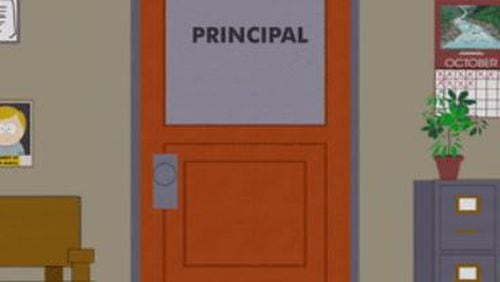My experience with strict discipline in a parochial school made me yearn for a kinder, gentler classroom for my own kids. What I didn’t realize is those ruler-wielding nuns created much more orderly hallways and classes than my children typically experienced.
I was surprised at not only how much disruption occurs in classrooms today, but how much is tolerated. I’m not talking about students who toss desks or threaten violence; those offenses are rare and prompt action. I’m referring to kids who fall out of their chairs for laughs, talk over or back to the teacher and treat class activities as unwanted background noise to be drowned out or shouted down.
Disruptive kids increasingly are not being exiled to the principal's office; their behaviors are being addressed in class through a practice known as restorative justice. A blend of family therapy, people's court and town hall, restorative justice allows students to sit in a circle and address what happened with the teacher and affected parties and make amends.
The concept -- which requires schoolwide training -- is seen as an antidote to zero tolerance policies in which wrongdoers got no second chances and faced harsh punishment. In many schools now, students cannot be suspended for conduct violations, such as breaking dress code, failing to obey classroom rules or using profanity.
Alarmed over soaring suspension rates and racial inequities in who is suspended, schools across Georgia are adopting restorative justice. In a pilot at some schools, DeKalb saw a 50 percent drop in disciplinary actions and a 75 percent decrease in suspensions.
The question is whether fewer disciplinary actions and suspensions mean fewer infractions. If schools are under pressure to show declining rates of bullying or fighting, how can we be sure incidents aren’t being under-reported?
One of the largest labs for restorative justice is New York City, where Mayor Bill de Blasio pledged during his campaign to reduce school suspensions. To that end, he mandated documentation from principals of all attempted restorative interventions before a suspension could be approved. The district advised teachers, "Every reasonable effort must be made to correct student behavior through guidance interventions and other school-based strategies such as restorative practices."
As a result, suspensions plummeted in New York City schools. But are students safer?
That issue is being debated in the wake of a fatal attack in a Bronx high school in September. An 18-year-old student at the Urban Assembly School for Wildlife Conservation stabbed two classmates who threw pencil bits and paper balls at him in a history class. Abel Cedeno killed a 15-year-old and seriously injured a 16-year-old. Cedeno brought a three-inch switchblade to school to protect himself from what he described as persistent bullying, although not by the two younger students he attacked.
Urban Assembly did not appear dangerous based on its discipline data, but parents described a school where bullying and disrespectful behaviors went unchecked. Critics of restorative justice cited a school climate survey four years ago at Urban Assembly in which 94 percent of teachers said they’d recommend the school and 80 percent of students said they felt safe in the building. Last year, only 19 percent of teachers said they’d recommend the school and 55 percent of students said they felt safe.
In his study "School Discipline Reform and Disorder," Manhattan Institute researcher Max Eden found that, at the same time Mayor de Blasio heralded safer schools, climate surveys told a different story. From 2013-14 to 2015-16, Eden found "more than half of schools saw a deterioration in mutual respect, and only a fifth saw an improvement, according to students. On physical fighting, gang activity, and drug use, three times as many schools saw a deterioration as saw an improvement, according to students."
As with algebra-for-all to whole language, proponents of restorative justice contend the concept is sound; weak implementation is the culprit. One problem is that research has not yet carefully examined what constitutes an effective restorative justice program. (The U.S. Department of Education has funded a three-year study.)
In the meantime, teachers face a balancing act between the students who obey the rules and those who flout them. In a new study of the academic and behavioral consequences of discipline policy changes in Philadelphia Public Schools, Thomas B. Fordham Institute researchers noted: "Suspensions may have costs for suspended students, but these must be balanced against the necessity of maintaining an orderly learning environment. And the individuals best positioned to make those judgment calls, and to gauge how effective future approaches to discipline may be, are those on the front lines."







